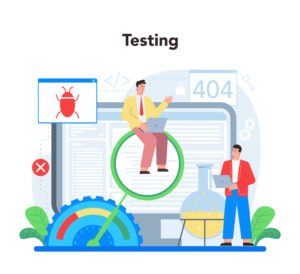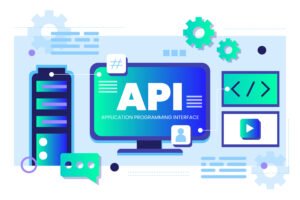Speed and quality are non-negotiable when it comes to digital delivery. Enterprises can’t afford slow releases or buggy APIs that break critical customer experiences. That’s where API test automation with CI/CD pipelines comes in.
By embedding API tests directly into your Continuous Integration and Continuous Delivery (CI/CD) workflows, you ensure that every new code commit is validated instantly—long before it reaches production.
In this step-by-step guide, we’ll walk through how to integrate API test automation into CI/CD, the benefits of this approach, and the best practices to keep your pipelines efficient and reliable.

Why Integrate API Testing with CI/CD?
Modern applications rely on complex API ecosystems. Without automation, testing becomes a bottleneck. By integrating tests into CI/CD pipelines, you achieve:
Faster Releases – detect API failures early, reducing hotfixes.
Improved Quality – every commit is validated with automated checks.
Shift-Left Testing – bugs are caught at the earliest stage.
Continuous Feedback – stakeholders see real-time reports after each pipeline run.
Reduced Costs – fewer defects escape to production.
Step-by-Step Guide to API Test Automation with CI/CD
Step 1: Define API Testing Strategy
Before automation, decide what to test:
Functional (status codes, payload validation)
Security (authentication, authorization, data leaks)
Performance (latency, load, stress testing)
Contract testing (schema validation)
Step 2: Select the Right API Automation Tool
Choose a framework or platform that supports:
REST, SOAP, GraphQL endpoints
Environment switching (Dev, Test, UAT, Prod)
Integration with CI/CD platforms (Jenkins, GitLab, GitHub Actions, Azure DevOps)
Dynamic reporting & dashboards
Codeless tools with AI-powered test generation can speed up adoption.
Step 3: Create API Test Suites
Organize tests into categories:
Smoke tests – validate core endpoints after every commit.
Regression tests – verify end-to-end functionality.
Security tests – enforce compliance and data safety.
Performance tests – validate scalability under load.
Step 4: Integrate Tests into the CI Pipeline
Most CI/CD tools support easy integration via plugins, scripts, or API triggers.
Example workflow:
Developer pushes code to repo
CI tool triggers build pipeline
API tests run automatically
Test results are reported in dashboards and logs
If tests fail → pipeline stops, preventing bad code from deploying
Step 5: Enable Continuous Feedback & Reporting
Don’t just run tests—make results visible. Use dynamic dashboards that highlight:
Test coverage
Failure trends
Response time metrics
Security validation status
This ensures QA, Dev, and Ops teams stay aligned.
Step 6: Scale with Parallel Execution & Containers
For enterprise-scale pipelines, run tests in parallel using Docker, Kubernetes, or cloud runners. This reduces execution time while maintaining high coverage.
Best Practices for API Testing in CI/CD
Start small with smoke tests, then scale up
Use synthetic & dynamic test data for stability
Keep tests environment-agnostic
Automate contract testing to catch spec mismatches early
Monitor flaky tests and fix them quickly to maintain pipeline trust
Final Thoughts
API test automation with CI/CD isn’t just a trend—it’s the backbone of modern DevOps. By embedding API validation into your pipelines, you ensure faster releases, stronger quality, and higher customer trust.
At Total Shift Left, we help enterprises integrate AI-driven API automation directly into CI/CD pipelines, offering:
Codeless and code-based test automation
Advanced dashboards for real-time insights
Environment-aware execution across Dev → Prod
Scalable frameworks that grow with your API ecosystem
Ready to embed API automation in your CI/CD? Book a demo today and let’s build a resilient testing pipeline together.











